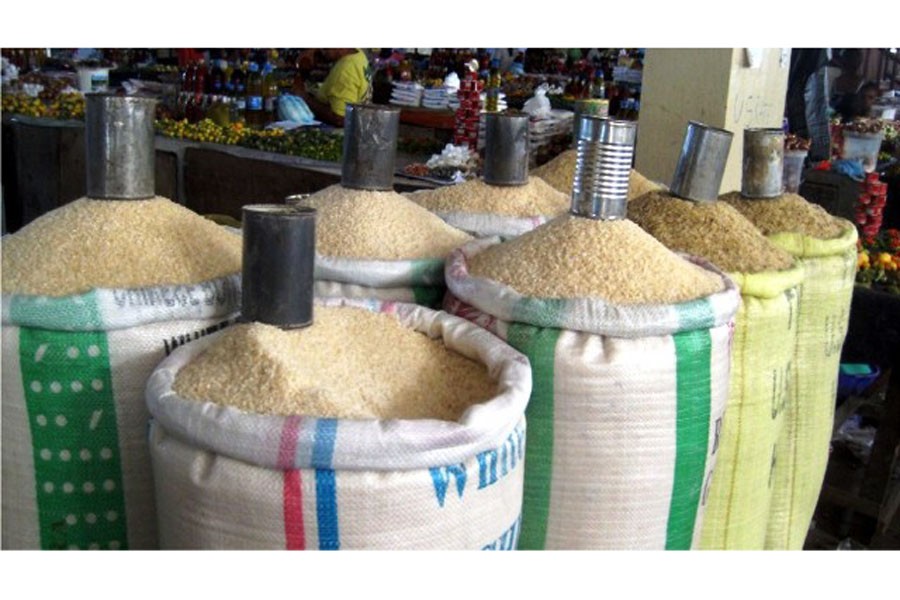As farmers are now busy harvesting Aman, one of the two main rice crops of the country, the prices of the main staple are again on the rise. This is really an unusual development and does indicate to a possible volatile rice market in the coming months.
Following an extensive damage caused by flash floods to Boro crop in the early part of this year in haor areas, the rice prices had started rising and gradually reached an all-time high level in the month of October. However, two other factors did also contribute to an unprecedented hike in the price of the essential item.
The first factor was the depletion of the stock of rice in the government silos to an alarmingly low level. The directorate of food, on the one hand, failed to procure sufficient quantity of rice from the domestic sources for consecutive seasons and also overlooked the need for importing the same from international market, on the other.
The second factor related to the lower import by the all-important private sector. The private importers of cereals reduced the import of rice to a great extent as the government increased the duty on the item to 28 per cent.
By the time the government became aware of low food stock, the prices of rice, particularly those of coarse varieties that are consumed by the poorer section of the people, had soared to an extremely high level. The ministry of food suddenly turned hyperactive to fill up its almost empty silos and could manage import nearly 200,000 tonnes of rice. The government also reduced the import duty on rice by a big margin. The present rate of duty on rice import is only 2.0 per cent.
All these steps and the arrival of the Aman harvesting season created a soothing effect on the rice market and the prices of the staple started coming down. A kilogram of coarse variety that used to cost the consumers Tk 50 came down to Tk 42 in the last week of November. But all on a sudden the market has now taken a reverse turn and during the last couple of days, the prices of all varieties of rice increased by Tk 2.0 a kg, on an average. The rise is unexpected as newly harvested Aman rice has started arriving in the wholesale market in sufficient quantities.
However, one reason-the revised government's procurement price for Aman this year-might be behind the ongoing unusual price trend in the rice market. The government last Thursday announced the revised procurement price at Tk 39 a kg for the current Aman season. It has a target to procure 300,000 tonnes Aman rice this year. The government could not achieve even a fraction of procurement targets during the last rice reasons, mainly due to a large gap in procurement price and that prevailing in the open market. Even meetings between food ministry honchos and the top rice millers had failed to produce any positive results in this respect.
The government has, possibly, realised the hard fact that it is better to procure rice from the local market than doing the same from the international market. The food ministry people have come to learn the hard way how difficult it is to buy rice from international markets at an affordable price and also to the liking of the consumers. The food department is also facing problem while disposing of a large quantity of imported 'atap' (non-parboiled) rice through its OMS (open market sale') outlets as most consumers have the habit of consuming parboiled rice.
The government has raised the procurement price by Tk 6.0 a kg from that of the last Aman season on the ground that the cost of production at the growers' level has gone up this year for a variety of reasons. The reason cited by the government for revising upward the procurement price is very much justified. But it would bear no meaning if the real growers do not benefit by the hike in procurement price. One has ample reasons to doubt the actual outcome. It is the millers and some unscrupulous officials at the food department who would reap the most benefit, it is suspected.
It could be that information about the revised procurement price was leaked to the millers beforehand. This might be the cause behind the sudden uptrend in rice prices in the market.
However, it is more likely that rice prices would not return to the previous normal level. Even the opposite may happen. The new procurement price will continue to be a major determinant of the market. The price of coarse variety, which is considered the minimum price level of the item, does always maintain a gap of few Takas (of course, on the higher side) with that of the government's procurement price. So, the low-income people are likely to bear with the increased cost on account of their cereal consumption in the coming days. However, like many other areas, they would soon learn to live with this development also.


